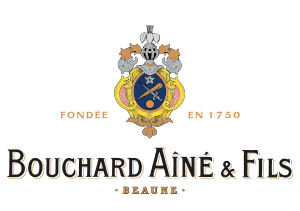MÂCON-VILLAGES 2020
MÂCON-VILLAGES 2020
Varietal
Tasting notes
Nose: Floral and fruity aromas, with hints of lemon, mint and honeysuckle. Exotic and spicy aromas.
Palate: Well-balanced, with herbaceous and floral notes. This wine is light, charming and fresh. It seduces with its spontaneity and tenderness.
Food and wine pairing
Serving suggestions
Ageing potential
Origins
The geographical area covers the whole of the Mâcon arrondissement, but there are 43 communes where a specific demarcation defines the Mâcon-Villages appellations. The sheer size of the vineyard, with its variety of soils and microclimates, makes it possible to offer a wide range of Mâcon blancs.
- Clay-limestone soils.
- East-facing.
- Gentle slope.
- Altitude: around 300 m.
Vinification and maturing
Ageing during 6 months for one part in stainless steel tank and for the other part in barrels.
Vintage : 2020
The current public health crisis has certainly marked this year’s harvest, which nonetheless has been able to go ahead! Despite the year’s record temperatures and lack of rainfall, there is been no lack of quality, although yields are down, with an especially mixed picture with regard to reds. However, these have generally been very well-balanced. Overall, we have seen nice levels of acidity, promising good aging potential…
All over Burgundy, 2020 was notable for its mildness and low rainfall. After a winter with no serious frosts, we went straight into a spring dominated by sunny, dry weather, resulting in very early bud break. Infrequent outbreaks of rain in June and July were not enough to stave off water shortages. Very high summer temperatures combined with intense sun exposure levels led to the vines gradually falling prey to hydric stress, causing delays to fruit ripening before harvest-time.
Once again, the vegetative cycle was shortened, being almost three weeks ahead of 2019’s. Thankfully, the harvest was saved by the relative cool of the nights. The harvest was of marvellous quality but there was very little juice in the red grapes (reduction of 30 to 50%), and reasonable potential alcohol, despite the heat. The whites, on the other hand, coped very well with these extreme conditions and yields were very good.
Relatively poor yields for the reds, normal yields for the whites. Some appellations achieved excellent levels of optimal ripeness, with 50% of grapes harvested with the ‘vendange entière’ (no destemming) approach.
Harvest started on the 21st August for the Côte Chalonnaise, more specifically, the Givry reds and then on the 23rd of August the first Chardonnay grapes were handpicked in the shape of the Beaune 1er cru Les Marconnets.





 PDF file
PDF file